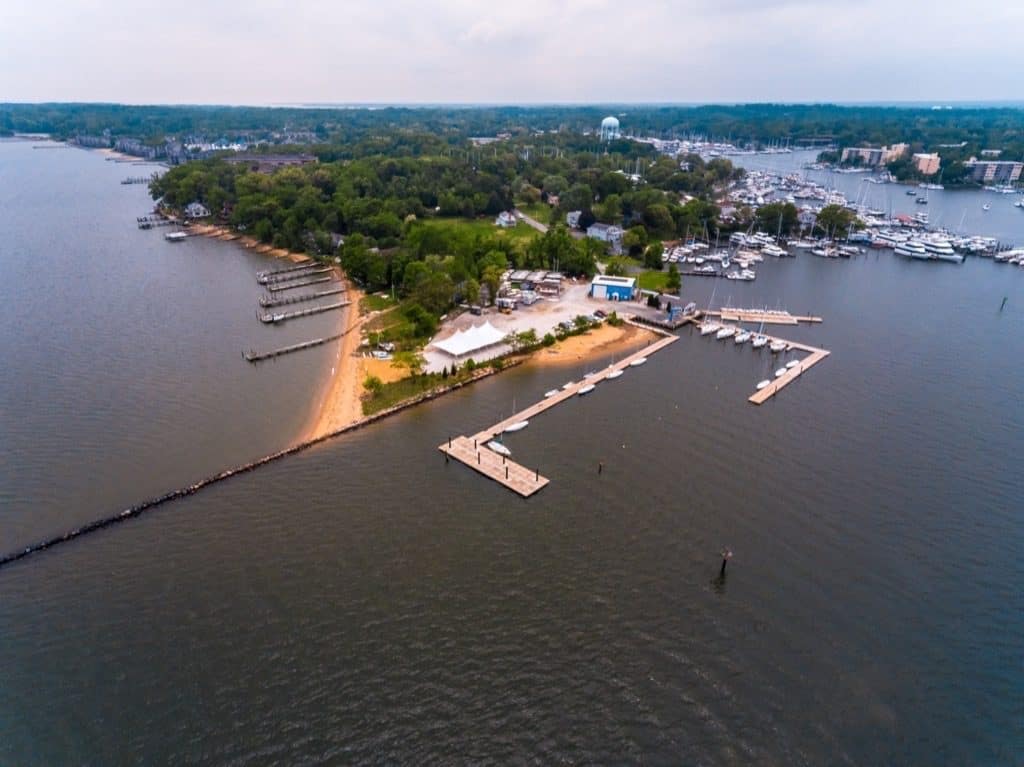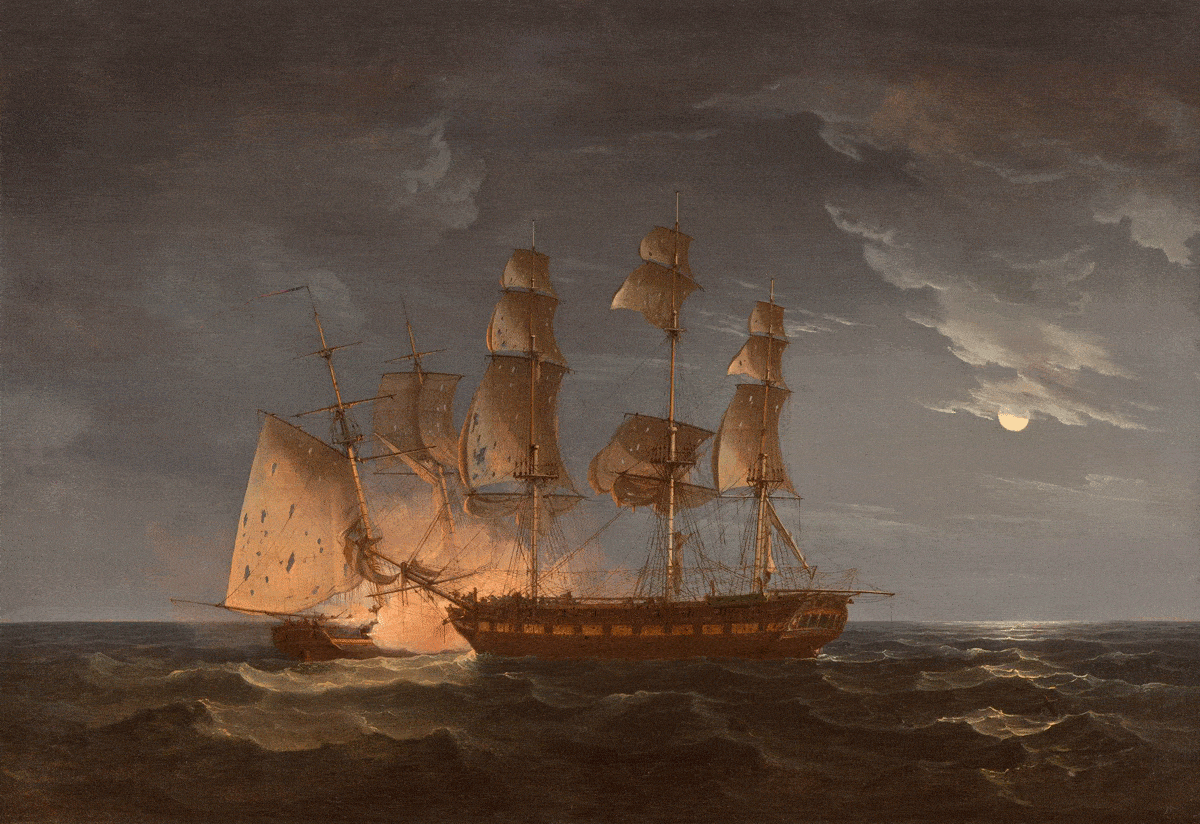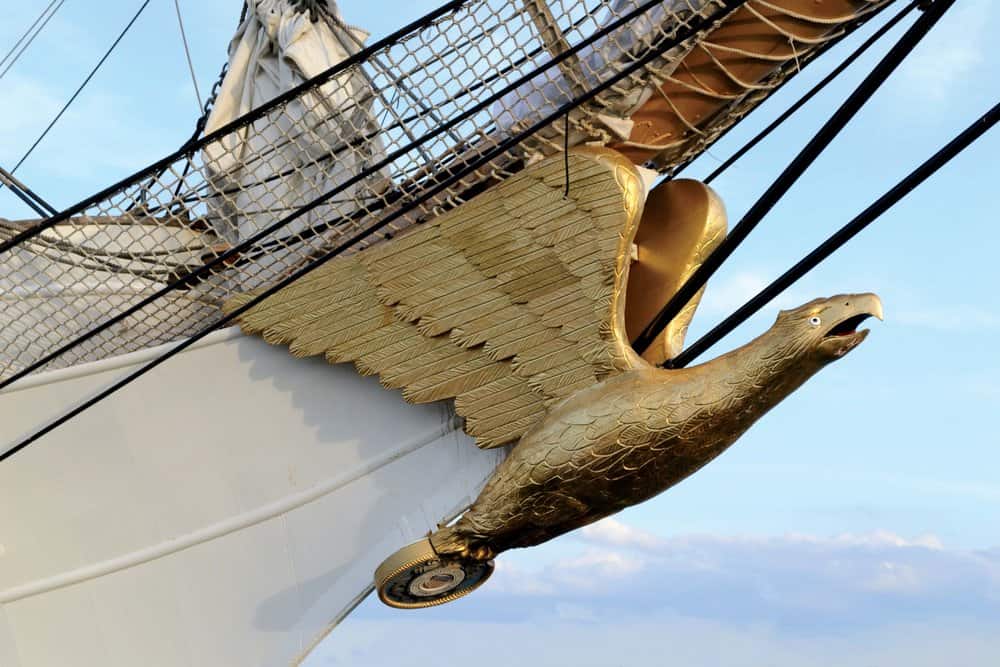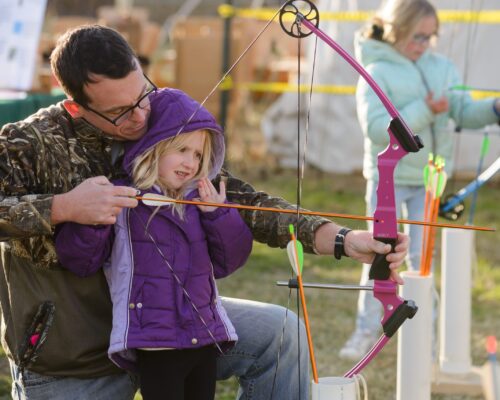The landmark sailing school continues to chart the course for new sailors
The best stories always start with the most memorable characters. And so it is with the Annapolis Sailing School, which celebrated its 60th anniversary in July. The story of the school with its signature “The Annapolis Way” tagline, and the incredible effect it has had on the sailing industry, begins with Jerry Wood (1924-2003), a uniquely memorable visionary.
As Wood told it, the idea to start the Annapolis Sailing School came to him in the mid-1950s when a tourist asked him where he and his friends could rent a sailboat for the afternoon. Wood had recently closed down his Eastport-based toy business. He also owned a Tornado catamaran and a Raven dinghy, both plywood, and neither were ideal boats for beginners. Undeterred, Wood struck up a conversation and convinced the tourists to rent one of his boats for the afternoon. When the same thing happened the next weekend, Wood had a good idea.
He bought a fleet of used, 17-foot, Mustang sailboats and opened a boat rental business at the foot of Sixth Street in Eastport. Not so shockingly, Annapolis was a better market for sailboats than toys. But there was still one problem:
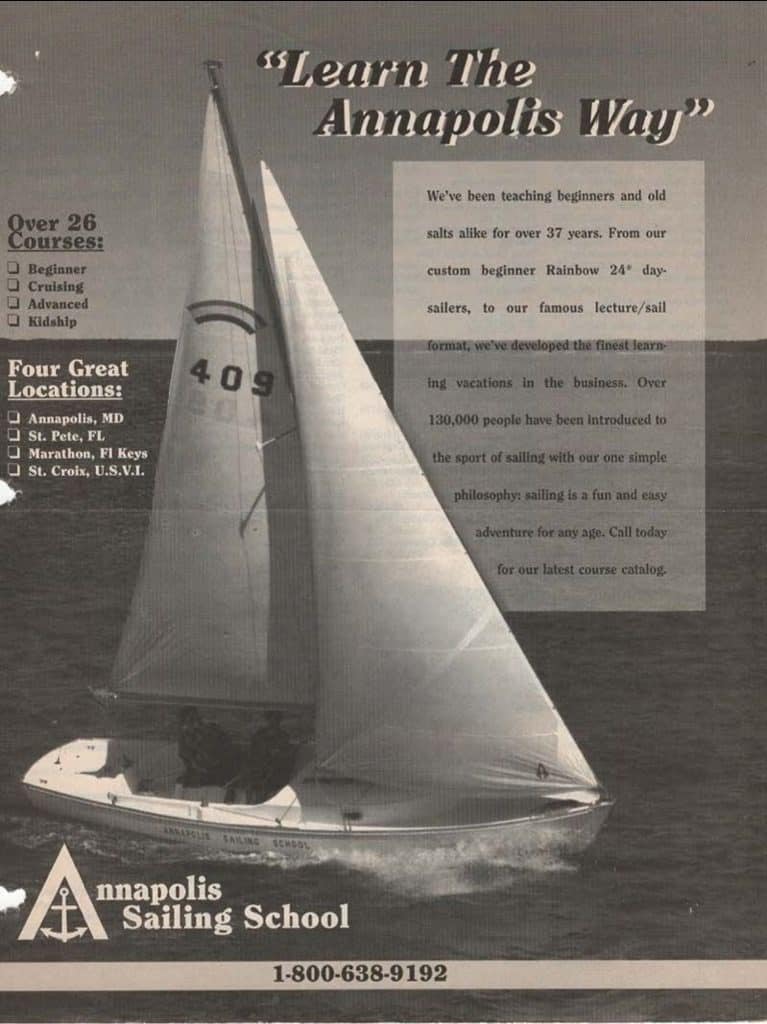
“He had boats to rent, but people didn’t know how to sail them,” says John Cosby, who is today the general manager of the school. Wood’s clients were excited to get out on the water, but they didn’t know enough to keep themselves out of it. Thus, Annapolis Boat Rentals became the Annapolis Sailing School.
“When Jerry started the school in ’59, there were no adult sailing schools in the United States, outside of yacht clubs,” says Rick Franke, general manager emeritus of the School. “Annapolis was the first recreational sailing program of its kind.”
The school existed to educate new sailors and get everyone comfortable on the water. But with a former toy maker at the helm, its core mission was bound to be unique.
“Most sailing programs were aimed at racing sailboats,” recalls Franke. “Ours was always recreational sailing—sailing is fun. We minimized classroom time and emphasized time on the water.” The “seriously fun” factor was the difference, and it quickly caught on.
“We weren’t lecturers,” says Cosby of his days as an instructor. Hired in 1977, after his junior year of high school, he made a whopping $18 a day at the school. “In the early days, students would take class over on Sixth Street, then they’d break out and jump in cars and come across the creek to get into boats as fast as they could.” While the classroom lessons were taken seriously, the sailing was meant to be fun and relaxing. But the sailboats Wood used for training purposes weren’t so relaxing.
“They were using Mustangs,” says Cosby, “which are too tippy, and weren’t purpose-built.” With nothing available on the market for Wood’s purposes, he decided to build his own.
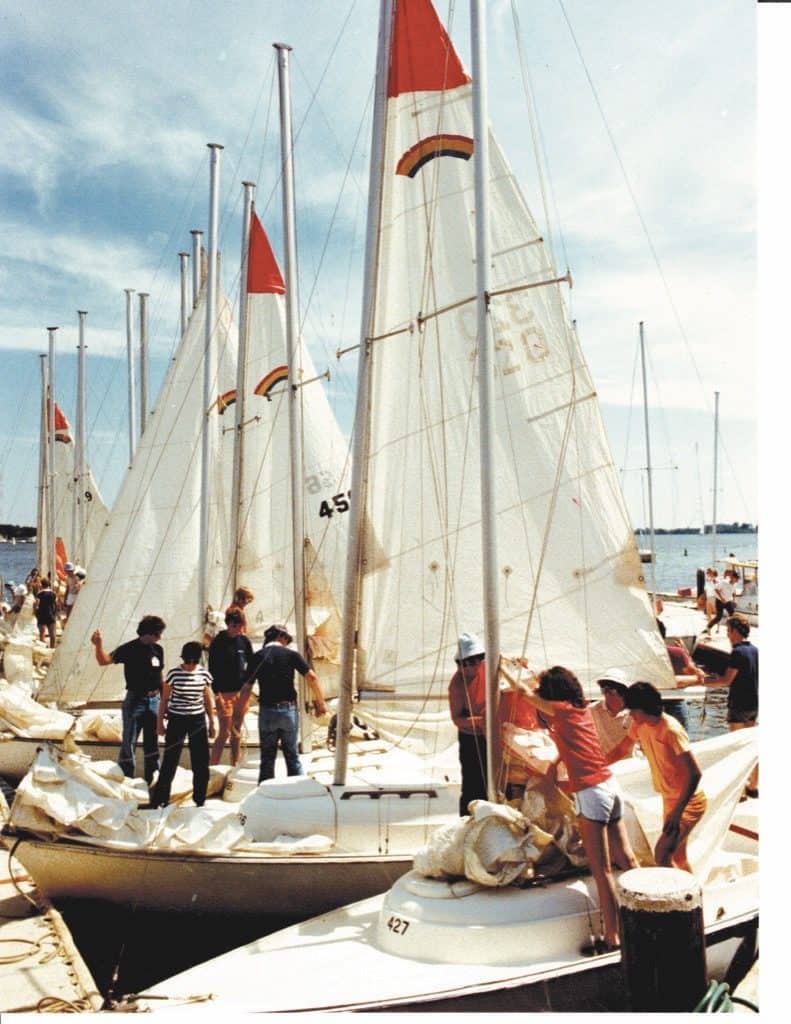
“The Rainbow was a commissioned design from Sparkman and Stephens, the first boat of its type to be designed specifically as a training boat,” says Franke of the 24-foot sailboat introduced to the Chesapeake Bay in 1962. The renowned Olin Stephens himself attended the boat’s launch. But, despite the prestige of its architect, it was not quite right for Woods’ intentions.
“They were originally built with an 800-pound keel,” says Cosby. “And they were tippy. Sometimes beginners would become very trepidatious and wouldn’t like it when the boat heeled over.”
Most importantly, Wood did not like it when the boat tipped.
“He approached Sparkman and Stephens and said, ‘I need you guys to build me a boat that three drunks can take out in a thunderstorm and come back safely,’” says Cosby.
Franke laughs. “Yeah, Jerry told everybody that story.”
Stephens added 300 pounds to the keel to make the boats more stable, and the boom was raised to give students more headroom. With that, Wood had a more comfortable boat for his clients and a safe boat to carry his friends home.
The Sailing School’s Beginner’s Course was the basis of the school, and its most popular. A two-day program had students in the classroom for an hour each morning before getting into boats for two hours. A quick lunch break on land brought them back to the dock and kept them there long enough for another hour of sailing theory before launching them back into the water for more practice. “There are some concepts that are easier to get across to folks in front of a blackboard with a piece of chalk,” Franke says, but on-the-water experience was still the priority.
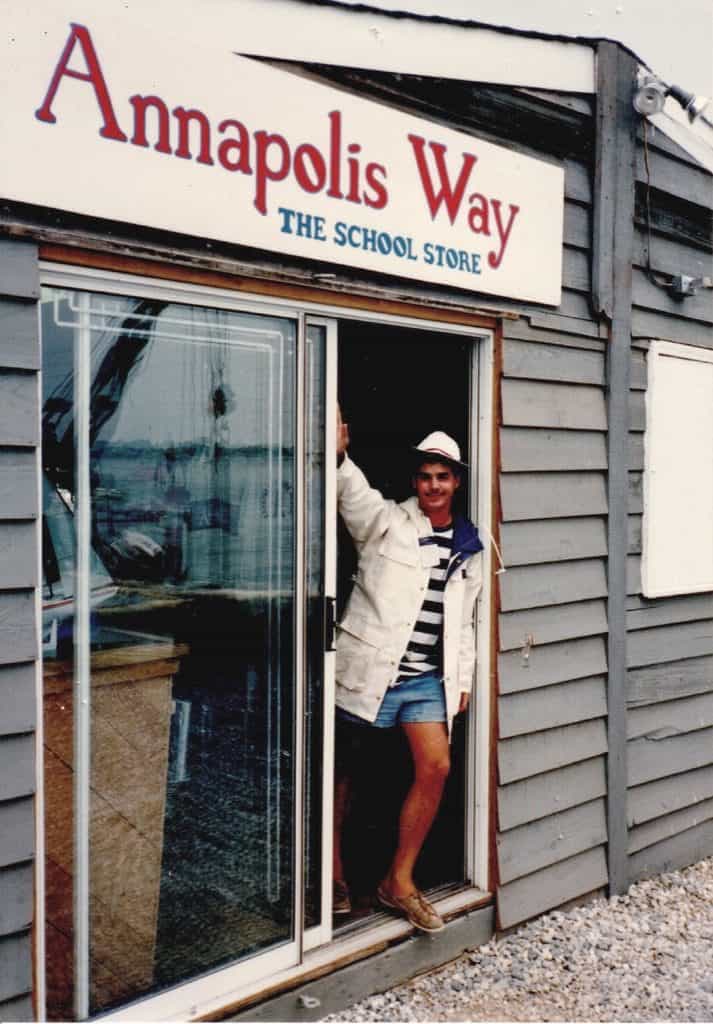
As the popularity of the school grew, so did their list of offerings. The most popular became the weeklong sailing programs up and down the Chesapeake, using the Chesapeake 25, a modified Rainbow 24 made optimal for overnight cruising. Flotillas of as many as 20 boats would cruise the Bay with students and instructors onboard, learning the “Annapolis Way” of sailing and fun.
While the idea of a weeklong sailboat charter with nights at the Crab Claw was appealing, the biggest benefit of the Annapolis Sailing School’s program was its design. The Rainbows were crewed by three sailors to each instructor, which meant that everyone had a job and learned through participation, not observation. “You’re either on the jib sheet or you’re steering the boat,” Cosby says. “Never sitting on your hands.”
Behind the scenes, Wood wasn’t sitting on his hands, either.
At the time, a slate of winter boat shows was the industry standard for taking deposits and planning production for the coming year. “Jerry hated winter boat shows,” says Franke. “They were all indoors, and he hated having to climb a ladder to see a boat.” Over drinks one night, Wood and local yacht broker Jerry Newark hatched a plan to host an in-water sailboat show, the first of its kind.
The idea was revolutionary and brilliant—They would fill the Annapolis City Dock with all the sailboats they could find, which would allow Wood’s students to buy boats. Wood and Newark brought in trade-show producer Peter Carroll as a third partner. Newark had contacts with the boatbuilders and sailboat designers. And Wood had the staff and floating docks to make the show happen. They chose Columbus Day weekend for the event, since the season was the Chesapeake’s most lovely and shoppers would have a long weekend to attend the show.
Despite all of the excitement, the sailing industry was slow to fall in love with the idea.
“Everybody was used to getting their orders in the winter,” says Franke. “An October show meant that builders had to go into production earlier to meet the demand.”
And, demand there was. In October 1970, the first-ever Annapolis Sailboat Show premiered with 51 boats. A crowd of 62,000 came through the gates; higher than anyone’s expectations.
“That first show was crazy, but it worked,” says Franke, who was a senior instructor at the school and later ended up involved in much of the show’s planning and construction. The shows worked because the sailing school worked. In 1972, they launched the first in-the-water powerboat show to follow the success of the sailboat show.
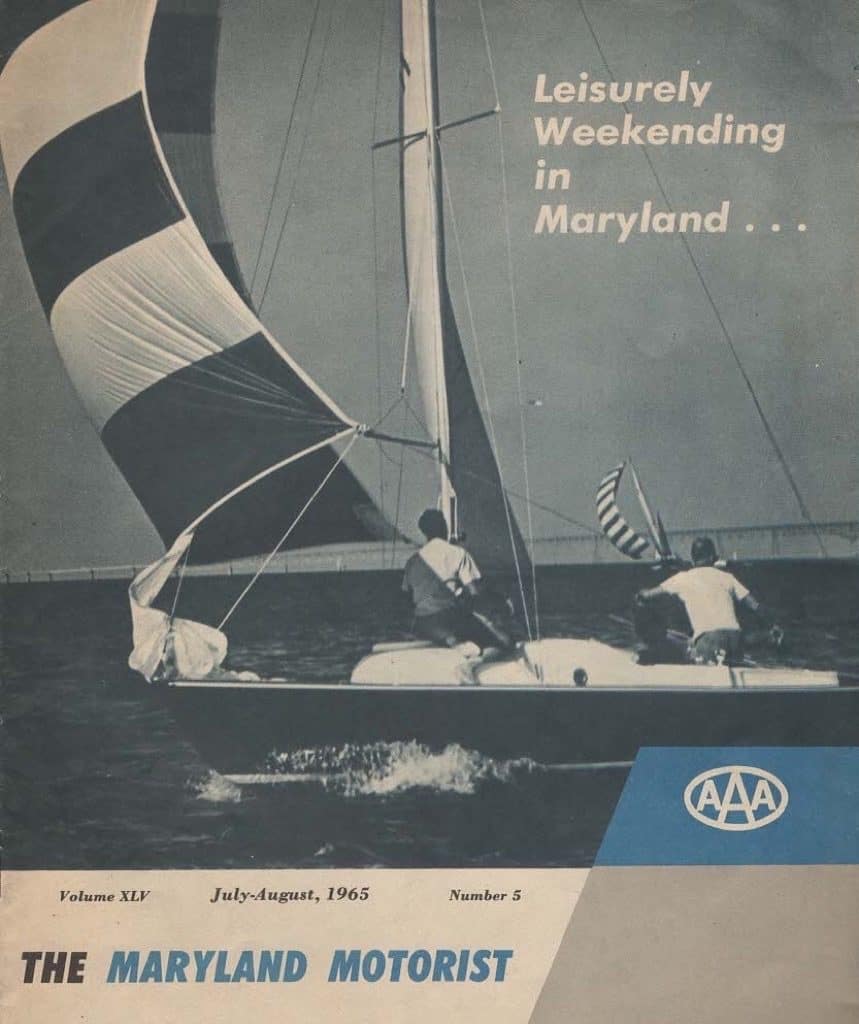
Every fall, as the sailing season was winding down, the school operation transformed into a working marina, swelling with scores of temporary employees to prepare and position the floating docks, electrical cabling, and the tents to be transported by boat to City Dock.
“He was a Renaissance man,” says David Cypher, president of the Cypher Advertising Agency and a longtime school employee. “He had a manufacturing facility in South County to build the Rainbows as well as the large floating docks for the shows. He even had his own printing presses that printed all the brochures and direct mail pieces.”
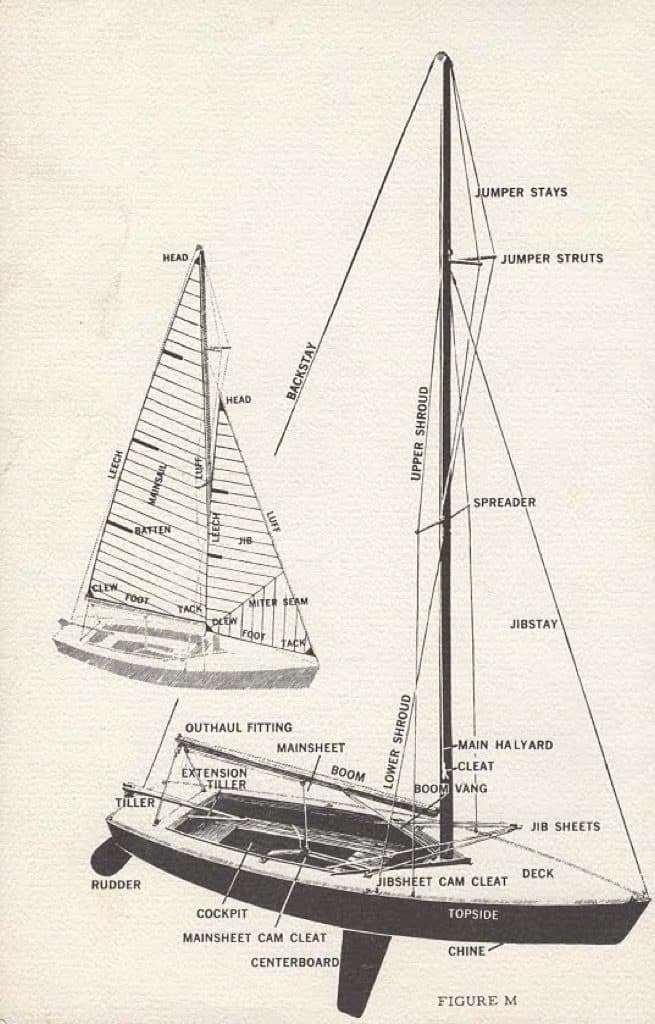
Wood stayed busy with the boat shows up until his passing in 2003. His wife and steadfast business partner, Kathy, followed him two years later. The legacy they left behind included not only the sailing school and the boat shows, but also many significant relationships. Cypher and Cosby met their wives while working at the school. Cosby’s wife, Hilary, had worked at the school over summer vacations along with five of her seven siblings. One of those siblings, Jenny, had moved to New York to raise her family, but had always stayed connected to the school because her childhood home was directly next to the Annapolis property.
“Because we own that property, we got a letter from the school’s owner saying that the school was going to expand into something more,” says Cosby, speaking of Tim Dowling, the school’s second owner, and his plans to expand the marina and create a space for more events. “Rather than that, Jenny and her husband, Rick [Nelson], approached me about possibly buying the school to keep it as it was.”
The school and the boat shows are now separate entities, but the school remains focused on creating as many sailors as possible each year. In 2014, Jenny and Rick Nelson purchased it, bringing in Cosby as general manager and to maintain the fleet of 22 Rainbows. “That says a lot about their passion,” says Brenda Reed, the School’s business manager. “To be here as a teenager, then to do things in your life and come back and be as passionate about it as you were when you were young—that says a lot about both the people and the school.”

